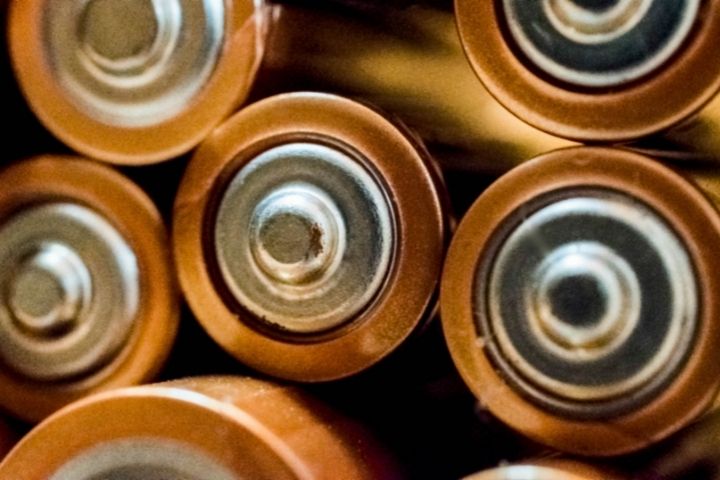Solid State Battery Stocks : A stable, long life solid-state lithium battery – Researchers show how they solved a 40-year-old mystery.

Summary: Researchers have developed a lithium-metal solid state battery stocks that can be charged and discharged at a high current density for at least 10,000 cycles, much more than has previously been demonstrated. The battery technology could extend the life of electric vehicles to that of gasoline vehicles, allowing them to last 10 to 15 years without needing to be replaced. The battery’s high current density could overlay the way for EVs that charge fully in less than 20 mins.
Long life, fast charging batteries are critical for the growth of the electric vehicle industry, but today’s lithium-ion batteries are too large, too costly, and take too long to charge to meet these requirements.
Researchers have been trying for decades to unlock the promise of solid-state, lithium-metal batteries, which can store significantly more energy in the same volume and charge in a fraction of the time as conventional lithium-ion batteries.
Xin Li, Associate Professor of Materials Science at Harvard’s John A. Paulson School of Engineering and Applied Science, said that because of its high capacity and energy efficiency, a lithium-metal battery is considered the holy grail of battery chemistry. Li further added that the battery’s stability has always been a problem.
Also read about : Lithium battery History

Now, Li and his team have developed a lithium-metal solid state battery stocks that can be charged and discharged at a high current density for at least 10,000 cycles, much more than has previously been demonstrated. The new concept was combined with a commercial high energy density cathode material by the researchers.
This battery technology has the potential to extend the life of electric vehicles to 10 to 15 years, without the need to upgrade the battery. The battery’s high current density could overlay the way for EVs that charge fully in less than 20 mins.
The findings were made available to the public in Nature.
“Our research suggests that a solid-state battery may be radically different from a commercial lithium-ion battery with a liquid electrolyte,” Li also said that We can unlock superior efficiency & exploit their abundant opportunities by researching their fundamental thermodynamics.
Chemistry has always been a major issue with lithium-metal batteries. During charging, lithium batteries transfer lithium ions from the cathode to the anode. On the surface of a lithium metal anode, needle-like structures called dendrites form. These structures expand into the electrolyte like roots and pierce the barrier between the anode and cathode, causing the battery to short or even catch fire.
Li and his team devised a multilayer battery that sandwiches various materials of varying stabilities between the anode and cathode to solve this obstacle. This multilayer, multimaterial battery avoids lithium dendrite penetration not by completely preventing them, but by monitoring and containing them.

Consider the battery in the form of a BLT sandwich. The bread is the lithium metal anode, followed by lettuce, which is a graphite coating. Then a layer of onions, which serves as the first electrolyte, and a layer of bacon, which serves as the second electrolyte. Finish with another layer of tomatoes and the cathode, the last piece of bread.
The first electrolyte (chemical name Li5.5PS4.5Cl1.5 or LPSCI) has a higher lithium stability but is more susceptible to dendrite penetration. The second electrolyte (Li10Ge1P2S12 or LGPS) has a lower lithium stability but tends to be resistant to dendrites. Dendrites are permissible to inflate through the graphite & first electrolyte in this design, but they are stopped when they meet the subsequent electrolyte. The dendrites, in other words, expand through the lettuce and tomato but stop at the bacon. The bacon barrier prevents the dendrites from penetrating the battery and shorting it out.
Luhan Ye, co-author of the paper and a graduate student at SEAS said that their strategy of integrating instability to stabilize the battery may seem counterintuitive, but just like an anchor can lead & control a bolt going into a wall, their multilayer design can guide and control dendrite development. Li also explained that the difference is that their anchor becomes too tight for the dendrite to drill through quickly, halting dendrite growth.
The battery is also self-healing, as its chemistry helps it to backfill dendrite-caused holes.
Li told that this proof-of-concept design demonstrates that lithium-metal Solid state battery stocks can compete with commercial lithium-ion batteries. Furthermore, Li adds that their multilayer design’s flexibility and functionality make it theoretically compliant with mass manufacturing procedures in the battery industry. It will be hard to scale it up to a commercial battery, and there will be many real world challenges, but they have the confidence that they will overcome those problems.
The Harvard Data Science Initiative Competitive Research Fund and the Dean’s Competitive Fund for Promising Scholarship funded the research. The Harvard Physical Sciences and Engineering Accelerator Award and the Harvard Climate Change Solutions Fund will help to further expand this initiative.
Source for the story:
The Harvard John A. Paulson School of Engineering and Applied Sciences provided the materials for this article. Leah Burrows wrote the original. Please keep in mind that content was edited for style and duration.
Journal Reference:
To read more on interesting technology related articles, please do visit : www.technologyinsight.tech





